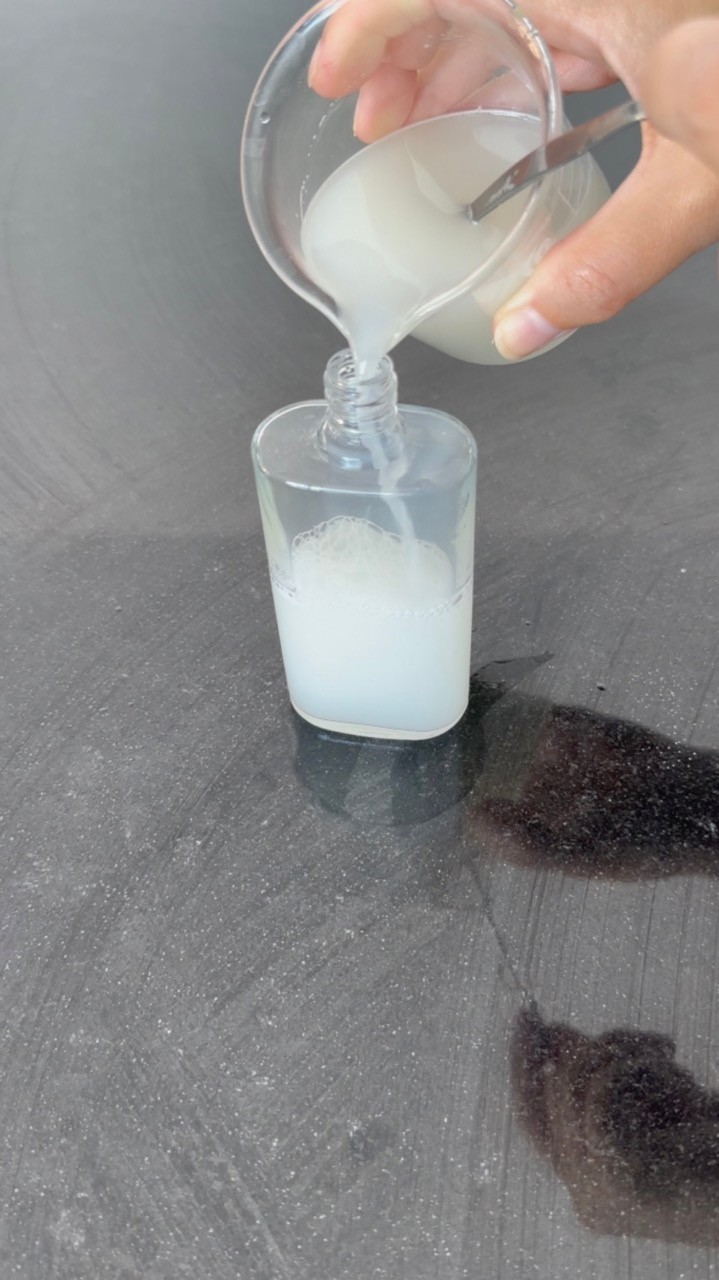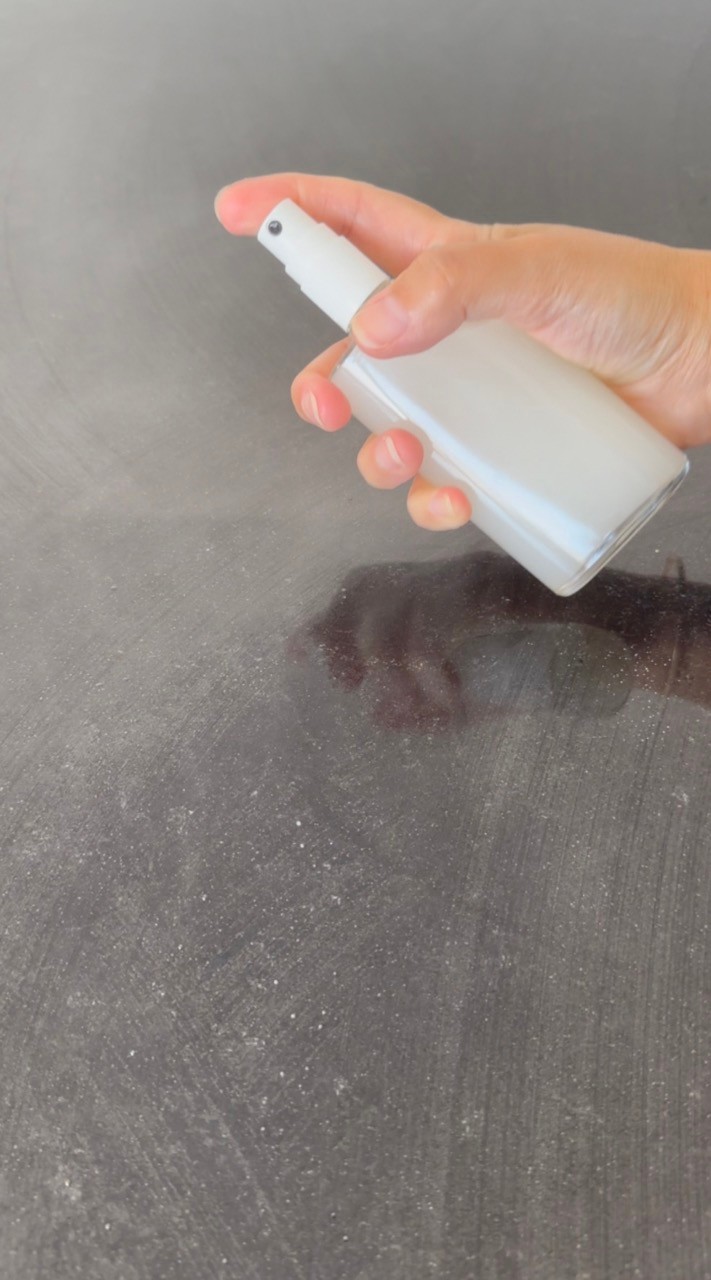Niacinamide Face Toner
| Phase | Ingredient | Percent (%) | Weight (g) |
|---|---|---|---|
| Phase A | Camomile hydrosol or distilled water | 80.0 | 80 |
| Oat extract (INCI - Aqua, Glycerin, Avena Sativa Kernel Extract) | 3.0 | 3 | |
| Liposomal Hyaluronic Acid (INCI - AQUA, PENTYLENE GLYCOL, LECITHIN, CAPRYLIC, CAPRIC TRIGLYCERIDE, SODIUM HYALURONATE) | 4.6 | 4.6 | |
| Citric acid | 1.3 | 1.3 | |
| Niacinamide | 4.0 | 4 | |
| Pentylene Glycol | 1.4 | 1.4 | |
| Cucumber extract (INCI - Glycerin, Cucumis Sativus Fruit Extract, Citric Acid) | 3.2 | 3.2 | |
| Bisabolol | 0.3 | 0.3 | |
| Glycerin | 1.0 | 1 | |
| Preservative Cosgard (INCI - Benzyl Alcohol, Dehydroacetic Acid, Aqua) | 0.8 | 0.8 | |
| Fragrance | 0.4 | 0.4 |
You can help support my website and channel through the “buy me a coffee” page.
Here is the link: https://www.buymeacoffee.com/diycosmetica
Your support helps me keep sharing here more information and more formulas.
A face toner is a water-based liquid infused with skin-nourishing ingredients that deliver hydration, balance pH levels, and remove any residual impurities after cleansing.
For serum with niacinamide check the Niacinamide Face Serum.
If you want to make face cream for after toner use, check the Ultra Facial Cream With Squalane.
One of the primary functions of a toner is to restore the skin's natural pH balance. Cleansing can disrupt the acid mantle, a thin protective layer on the skin's surface, making it more prone to damage and irritation. Toners help to quickly bring the skin's pH back to its optimal level, promoting a healthy skin barrier.
Toners provide an additional layer of hydration, which is especially important for those with dry or dehydrated skin. Ingredients like glycerin and Pentylene Glycol attract moisture from the environment and lock it into the skin, leaving it soft.
Toners can help minimize the appearance of pores. By removing residual oil and impurities, toners prevent pores from clogging, which can lead to enlarged pores and breakouts.
Applying a toner prepares your skin to better absorb the next steps in your skincare routine, such as serums and moisturizers. This ensures that active ingredients in your skincare products penetrate deeper and work more effectively.
Toners can have a cooling and calming effect on the skin, making them perfect for soothing irritation and redness. Ingredients like chamomile and cucumber extract are particularly beneficial for their anti-inflammatory properties.
The best time to use a face toner is after cleansing and before applying serums and moisturizers.
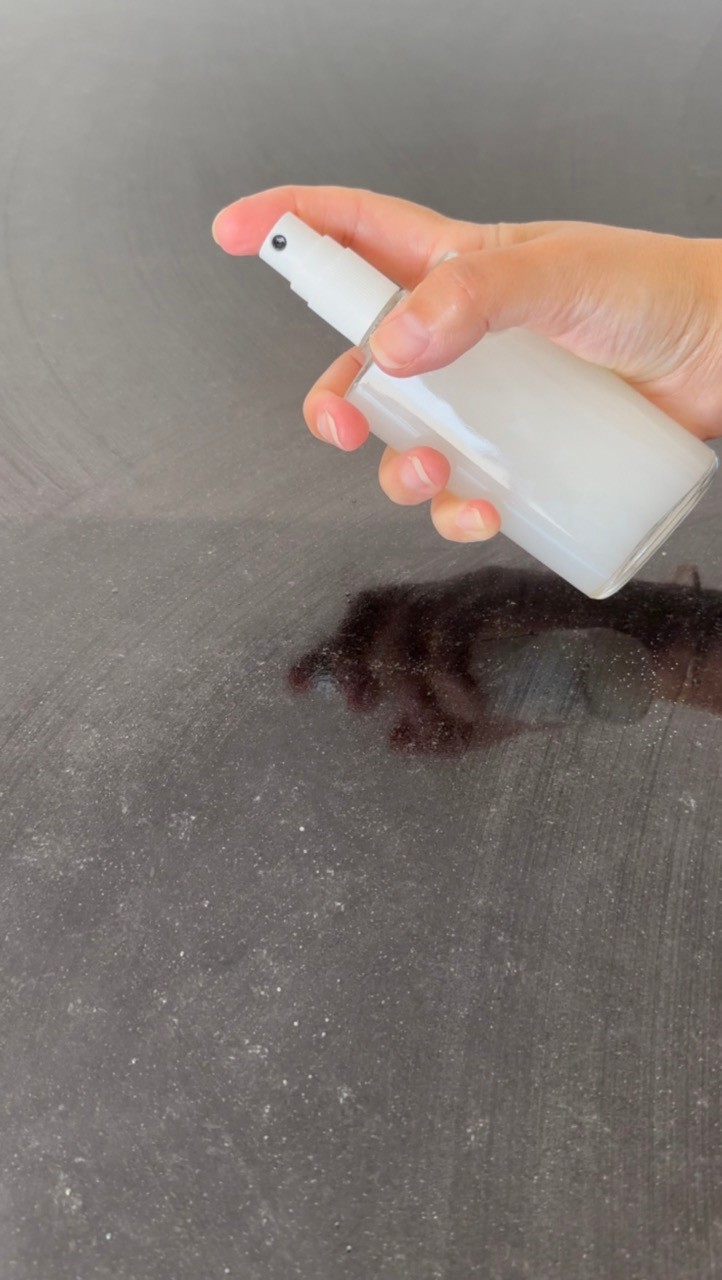
The ingredients in this formula were chosen to work together so the face toner will balance the skin's pH and leave the skin soft and clear before applying serums or moisturizing products. Let’s go over the ingredients in this formula and some alternatives you can use to replace them:
Chamomile hydrosol, also known as floral water, is a gentle and soothing ingredient derived from the steam distillation of chamomile flowers. It's known for its anti-inflammatory and calming properties and is ideal for sensitive and irritated skin. You can use distilled water instead of the camomile hydrosol or rose, rosemary or green tea hydrosol instead.
Pentylene glycol serves multiple purposes in skincare formulations. It acts as a humectant, attracting and retaining moisture in the skin. It has antimicrobial properties that help preserve the product and enhance its overall stability. You can use Propanediol or Sorbitol instead of the Pentylene glycol.
Niacinamide, or vitamin B3, is a versatile skincare ingredient known for improving the skin's barrier function, enhancing elasticity, and evening out skin tone. It helps reduce the appearance of pores, fine lines, and dullness. Niacinamide is also effective in managing acne and reducing inflammation. At 4%, Niacinamide is within the optimal concentration range for maximizing benefits while minimizing the risk of irritation.
Oat Extract is known for its anti-inflammatory and soothing properties, primarily due to the presence of avenanthramides. These compounds help calm irritation and reduce redness, making it beneficial for sensitive skin. Oat Extract is also rich in antioxidants, which protect the skin from free radical damage caused by environmental stressors such as pollution and UV radiation. Additionally, the polysaccharides and lipids in Oat Extract help strengthen the skin barrier, protecting against external irritants and reducing trans-epidermal water loss. As an alternative, you can use Green Tea Extract or Aloe Vera Extract.
Cucumber Extract is celebrated for its anti-inflammatory and soothing properties. It effectively calms irritation, reduces redness, and soothes sensitive skin. Rich in antioxidants, cucumber extract protects the skin from free radical damage, helping to prevent signs of aging and skin damage. Its mild astringent properties can also help tighten pores and refresh the skin. You can use Licorice Root Extract, Grape Seed Extract, or Calendula Extract instead.
Bisabolol is a natural compound found in chamomile essential oil, renowned for its soothing and anti-inflammatory properties. It's especially effective in calming irritated skin and reducing redness. You can use Aloe Vera Extract, Calendula Extract, or Centella Asiatica Extract (Gotu Kola) instead.
Liposomal Hyaluronic Acid is a type of hyaluronic acid enclosed within tiny vesicles called liposomes, made of lipid bilayers. These liposomes enhance the delivery and stability of the hyaluronic acid, allowing it to penetrate deeper into the skin. This advanced system helps protect the active ingredient and ensures it merges easily with the skin’s natural lipids. Hyaluronic acid is a potent humectant that attracts and retains water, providing deep hydration. The liposomal form enhances its ability to hydrate deeply, resulting in plumper skin and reduced fine lines and wrinkles. You can replace it with Sodium Hyaluronate (a salt form of hyaluronic acid known for its smaller molecular size, which allows for deeper penetration and effective hydration) or Panthenol (Provitamin B5). If you use either, use 1% and add the remaining 3.6% to the hydrosol or distilled water. You can also replace the Liposomal Hyaluronic Acid with Low Molecular Weight Hyaluronic Acid; in this case, use 0.5% of the Low Molecular Weight Hyaluronic Acid powder and add the remaining 4.1% to the hydrosol or the distilled water (the Low Molecular Weight Hyaluronic Acid should be sprinkled on the hydrosol or distilled water, and you will need to let the powder to dissolve for some hours. You can check the method I used in the Niacinamide Face Serum.
Citric acid is an alpha hydroxy acid (AHA) that helps adjust the toner's pH to match the skin's natural pH. It also provides gentle exfoliation, helping to remove dead skin cells and promote a brighter, smoother complexion.
Glycerin is a potent humectant that draws moisture into the skin and helps to maintain hydration levels. It ensures the skin remains soft and supple, preventing dryness and flakiness.
Use the calculator to adjust the amount you want to make.
Method:
- In a beaker, add the hydrosol or the distilled water. Add the citric acid and stir to dissolve.



- Add the Niacinamide and mix to dissolve.

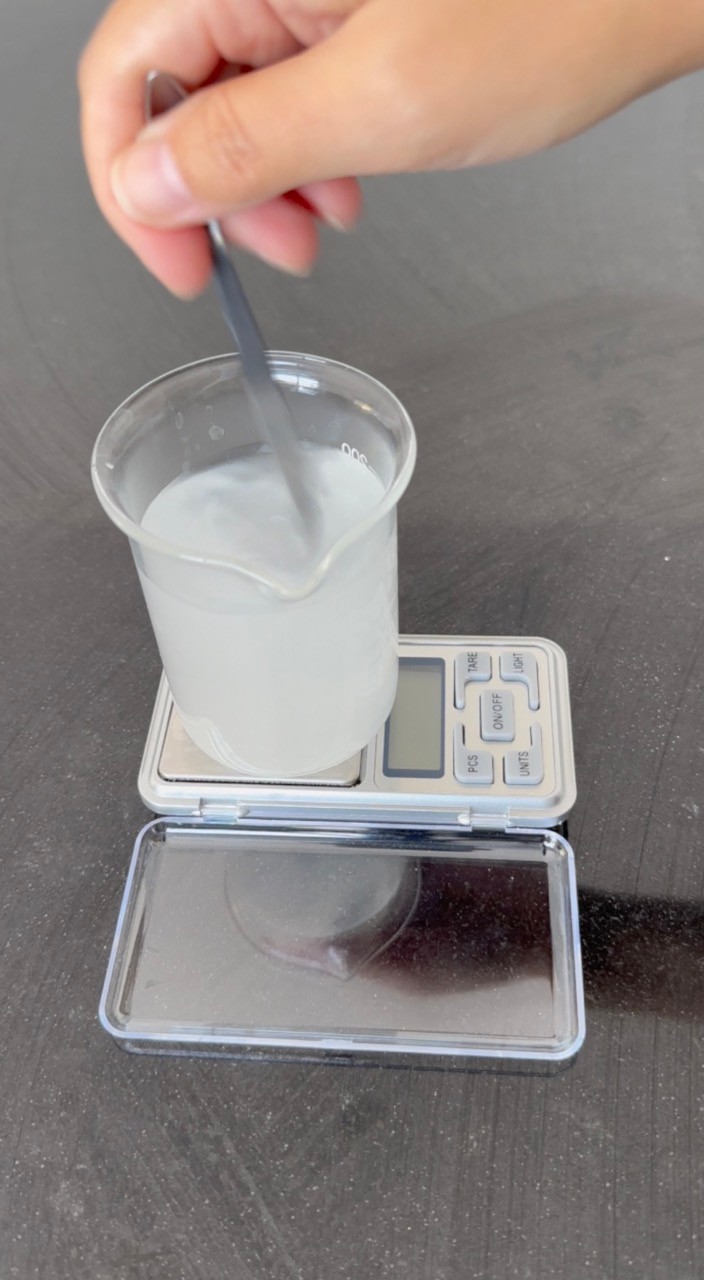
- Add the Pentylene Glycol, Cucumber and Oat extracts, the Bisabolol and the glycerin and stir.


- Add the preservative and the fragrance and stir.
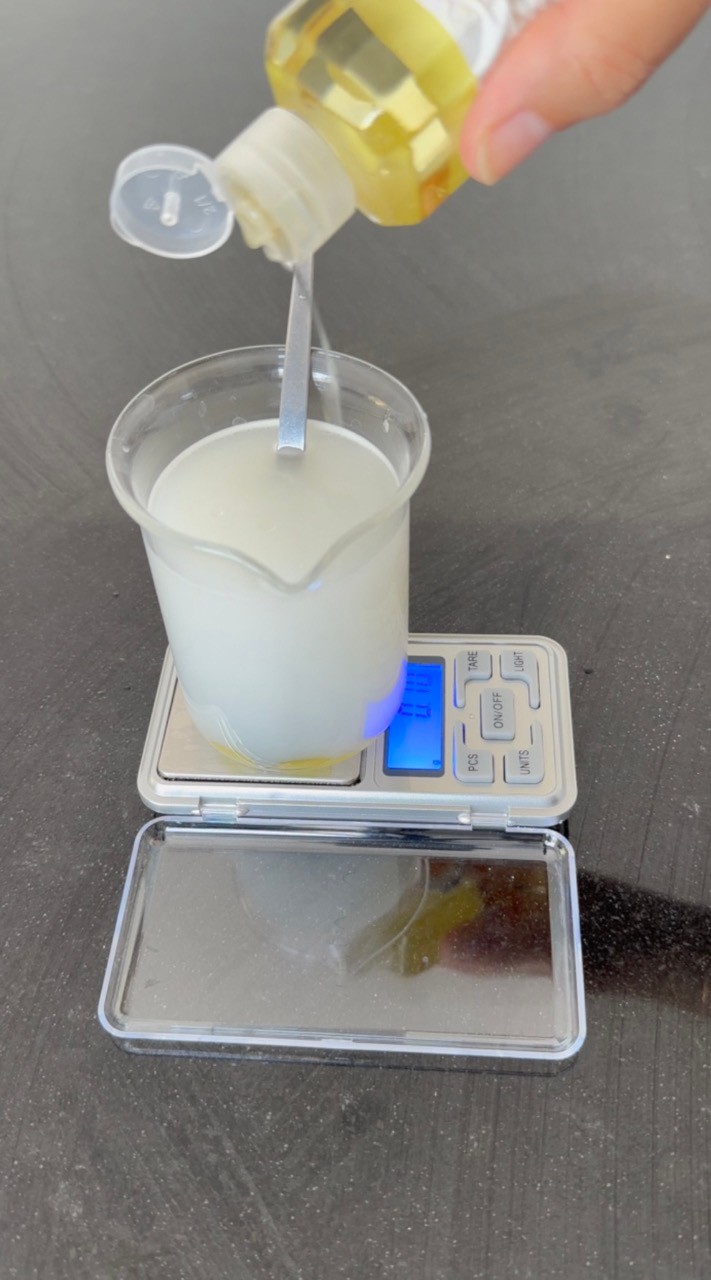
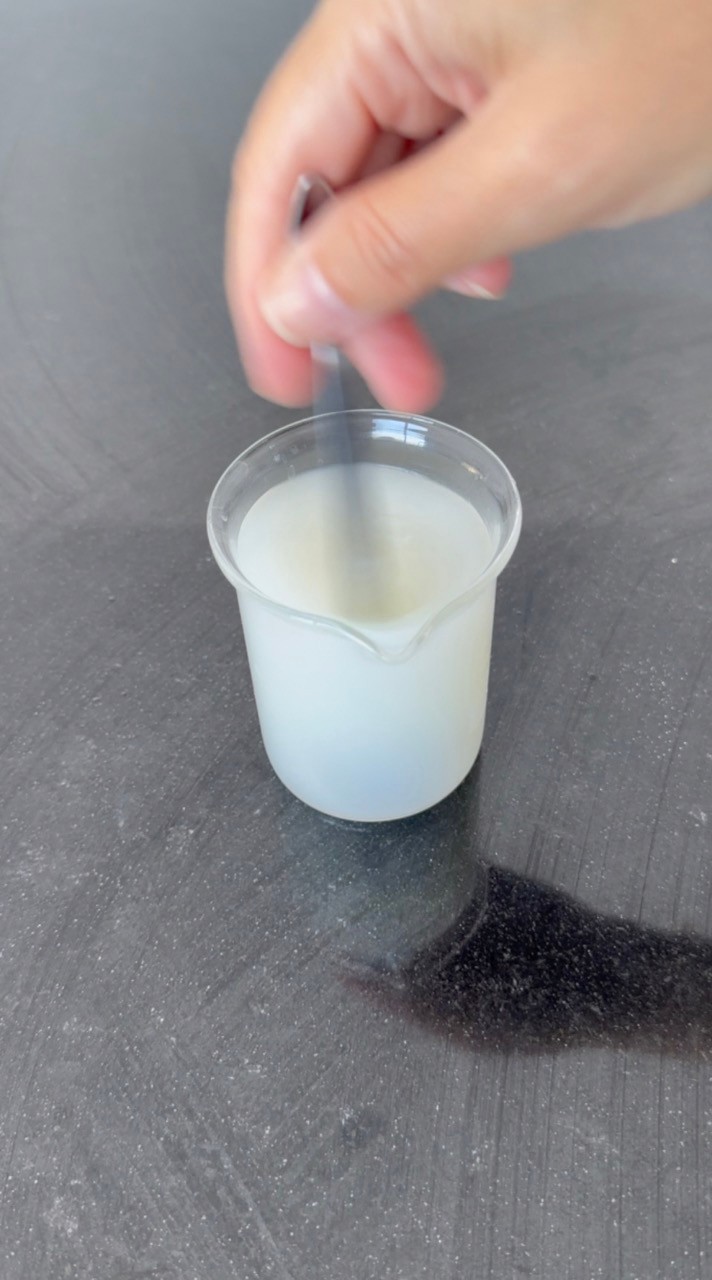
- Check and adjust the pH if necessary. The final pH should be 5-5.5. More about pH adjustments here.
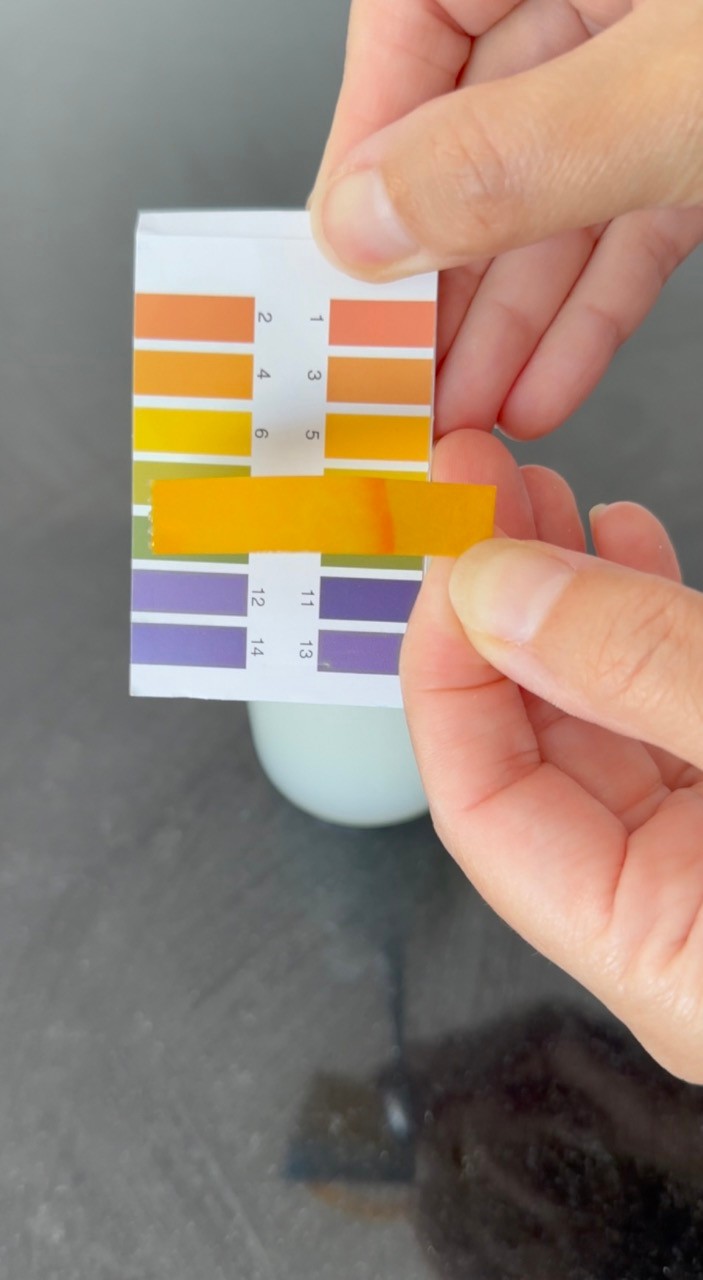
- Pour into a container. The toner is ready to be used. Give it a shake before spraying onto the face.
